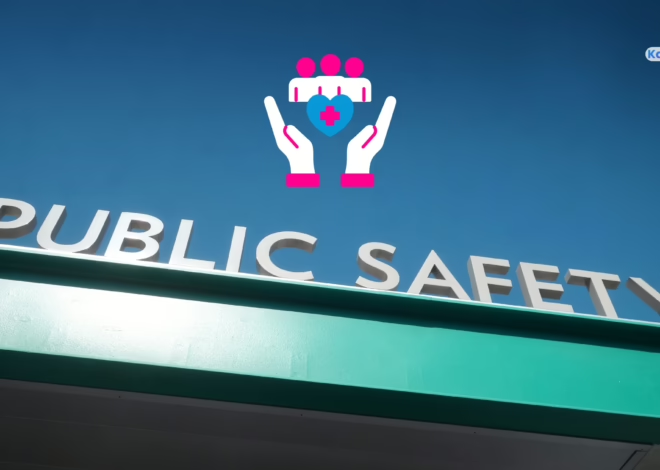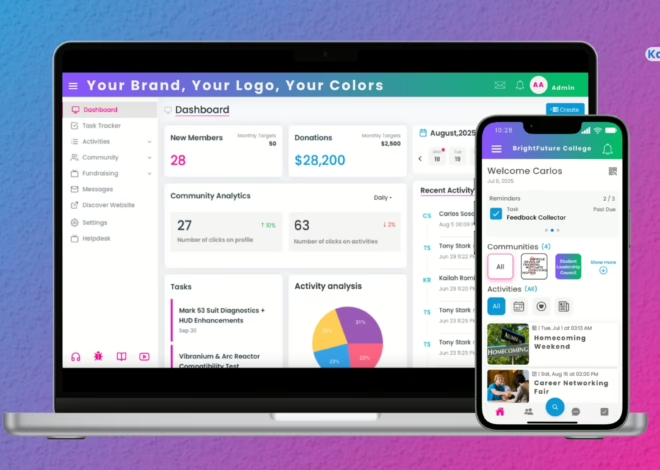
Preparing Your Community for Crisis: 4 Communication Management Best Practices
Table of Contents
Smart Summary: Here’s What This Blog on Communication Management During Crisis Will Explore:
▶ Leading Communities in Times of Crisis
Effective community management during crises requires clear leadership, timely information, and steady guidance to maintain calm and order.
▶ Why Crisis Preparedness Matters
Being prepared with a communication strategy helps communities respond quickly, minimize confusion, and protect member trust in critical moments.
▶ Understanding Crisis Communication in Community Management
Crisis communication is a proactive, transparent approach to keep members informed, safe, and united during emergencies or difficult situations.
▶ 4 Communication Management Best Practices for Crisis Preparedness
Honest messaging, multi-channel communication, empathy in responses, and actionable follow-through are keys to successful crisis management.
▶ Building a Crisis Communication Team
Designate clear roles and train a dedicated team to handle communications, ensuring coordinated, efficient responses under pressure.
▶ Leveraging Community Feedback During Crises
Actively gather member feedback through polls and direct messages to understand concerns and adapt messaging for better support.
▶ Leveraging Transparency to Strengthen Community Trust During Crises
Open, frequent updates, even when answers are incomplete, build credibility and reduce misinformation and anxiety among members.
▶ Preparing Communication Playbooks and Templates for Common Crisis Scenarios
Pre-planned message templates enable fast, consistent, and empathetic responses for various crisis types, saving time and reducing errors.
▶ The Importance of Training and Role-Playing in Crisis Communication Readiness
Practicing crisis scenarios through role-playing trains leaders to respond calmly, communicate clearly, and coordinate effectively when real crises hit.
▶ Using Data-Driven Communication to Tailor Crisis Messaging
Analyzing member data and sentiment guides personalized communication approaches, improving message impact and reassuring diverse audiences.
▶ FAQ: All About Communication Management in Crisis
Concise answers clarify how to use tools like Kannect for crisis communication, the importance of transparency, multitiered messaging, and empathy.
Let’s Dive In!
Leading Communities in Times of Crisis
Effective community management goes beyond routine tasks and daily organization, it plays a critical role when a crisis arises. Whether faced with sudden changes, emergencies, or controversies, strong community leaders act as anchors that help members stay calm, informed, and united. During turbulent times, these managers provide clear guidance, factual updates, and emotional support, steering the community through uncertainty with steady hands. Their ability to maintain cohesion and focus amidst disruption ensures that the community remains resilient and adaptable, emerging stronger from challenging situations.
Why Crisis Preparedness Matters
Crisis preparedness is essential because good communication during uncertainty can determine whether a community experiences confusion or maintains order. When community managers prioritize transparent, timely, and empathetic communication, they reinforce trust and credibility, which are vital to managing stress and stabilizing engagement. By establishing best practices in community management; such as having clear protocols, responsive channels, and pre-planned messaging strategies, leaders equip their communities to handle crises effectively. This preparedness not only mitigates immediate risks but also builds long-term resilience, enabling the community to recover more quickly and sustain growth in the face of future challenges.
Understanding Crisis Communication in Community Management
Crisis communication goes far beyond simply managing conflicts as they arise; it involves creating a proactive plan designed to keep community members safe, clear-minded, and connected throughout challenging situations. Effective community management recognizes that crises often bring uncertainty and anxiety, which can disrupt trust and engagement if not handled with care and foresight.
Thoughtful managers establish consistent routines and protocols before issues emerge, preparing both themselves and their members for unexpected events. These routines create a sense of stability and reassurance, helping the community navigate sudden changes with greater confidence. Transparent and timely messaging is at the heart of this approach, ensuring members receive accurate information quickly and understand the steps being taken to address the situation.
By openly communicating about what is known, what remains uncertain, and what actions are underway, leaders build credibility and maintain member confidence, even when circumstances are rapidly evolving. This level of transparency fosters a collaborative spirit where members feel informed, involved, and supported rather than anxious or excluded.
Ultimately, crisis communication within community management is about anticipating challenges, establishing clear communication pathways, and engaging members empathetically to preserve the health and unity of the community through difficult times.
4 Communication Management Best Practices for Crisis Preparedness
1. Communicate Honestly and Consistently
During a crisis, providing consistent and transparent communication is vital to maintaining community trust and preventing misinformation. Sharing facts openly, even when complete information is not yet available, demonstrates integrity and respect for members. Avoiding the temptation to withhold details helps reduce speculation and rumors that can exacerbate anxiety. Repeating clear, concise messages across all communication channels ensures everyone receives the same information, reinforcing clarity and minimizing confusion.
Through the Example Lens:
Imagine an online hobby community that experiences a technical issue affecting member data security. The community manager responds by sending weekly updates to all members, openly addressing what is known and unknown about the situation while outlining every step being taken to resolve the problem. Despite some uncertainties, this approach builds confidence among members, calms concerns, and encourages continued participation as frustrations are acknowledged and transparently managed.
2. Use Multi-Channel Communication Systems
Relying on a single communication method during a crisis can risk important information not reaching all members, especially if technical failures or platform outages occur. To ensure messages are delivered reliably, it is essential to utilize multiple channels such as email, SMS texts, in-app notifications, and social media platforms. This multi-channel approach creates redundancy, increasing the likelihood that critical updates and instructions reach every member promptly, regardless of their preferred communication method. It also demonstrates a commitment to keeping the community informed and safe through accessible, flexible means.
Through the Example Lens:
Consider a community of parents connected through a local support group confronted with a sudden severe weather event. The community manager uses Kannect’s suite of communication tools to send simultaneous updates via group chat, text messages, and emails. These messages include real-time safety instructions and check-in requests. Because multiple channels are used, families receive timely alerts despite potential service disruptions or limited internet access. The layered communication strategy ensures no one is left uninformed during this emergency, providing reassurance and coordinated guidance.
3. Practice Empathy and Compassion
Crisis situations often bring a mix of uncertainty and strong emotions like fear, frustration, and disappointment. Effective communication management during these times means addressing members’ concerns sensitively and with genuine understanding. By recognizing and validating the feelings of community members, leaders create an atmosphere of solidarity that helps ease tension and foster emotional support. Compassionate communication not only soothes anxieties but also encourages collaborative problem-solving, making the community more resilient and connected through difficult periods.
Through the Example Lens:
Consider a community leader managing a neighborhood group who faces the sudden cancellation of a series of much-anticipated local events. Through Kannect, the leader sends personalized messages confirming members’ disappointment, offering supportive words, and inviting them to participate in virtual brainstorming sessions to explore alternative community activities. This compassionate communication management approach helps members feel heard and valued, strengthens community ties, and transforms disappointment into collective action and hope.
4. Back Up Statements with Action
In times of crisis, managing communication effectively requires more than just sharing updates; it demands taking clear, proactive steps and visibly demonstrating progress. Members need to understand not only what is happening but also what actions are being taken to resolve the issue and how they can contribute if appropriate. Outlining the process transparently, assigning specific roles, and clearly communicating responsibilities are essential elements of responsible communication management. This approach fosters accountability, builds member confidence, and transforms passive recipients of information into engaged participants in the recovery process.
Through the Example Lens:
Imagine a professional online network experiencing unexpected technology downtime that interrupts member access. Community leaders use Kannect’s announcement features to keep members informed with real-time updates. Simultaneously, they assign troubleshooting tasks to specific team members using the platform’s task management tools, clearly communicating who is responsible for each action. Throughout the process, leaders invite member feedback and questions, creating an open channel for dialogue. This transparent and action-oriented communication management approach reinforces trust and reassures members that the situation is being actively addressed.
communication in management, communication management, communication management, communication management, communication management, communication management, communication management
Building a Crisis Communication Team
Effective crisis communication management begins well before a crisis emerges by assembling a dedicated team prepared to respond swiftly and cohesively. This team typically includes community leaders who understand the community’s values, moderators skilled in managing conversations, and technical experts who can address platform or system issues. Training this group on the overall communication management plan ensures everyone understands protocols, messaging priorities, and how to use essential tools like Kannect for streamlined coordination.
Assigning a single clear spokesperson is critical for delivering consistent, authoritative messages that reduce confusion and maintain trust. Defining roles clearly within the team helps avoid overlap and ensures that each member knows their specific responsibilities, whether it’s monitoring social channels, managing member inquiries, or handling technical fixes. Regular practice drills and simulations are also vital; these exercises prepare the team to act quickly and confidently, fine-tuning workflows and communication channels before a real crisis occurs.
Through the Example Lens:
Imagine a large alumni community that proactively forms a crisis communication team ahead of potential disruptions. The team includes a lead community manager as the spokesperson, several moderators assigned to monitor discussions, and IT specialists on call to resolve technical problems. Using Kannect, the team practices simulated crisis scenarios; sending updates, managing member questions, and coordinating responses. This preparation strengthens their communication management skills, so when a real issue arises, the team functions smoothly and effectively, keeping the community informed and calm.
Leveraging Community Feedback During Crises
Effective communication management during crises requires not only delivering clear messages but also actively listening to community members. Gathering feedback through tools such as polls, forums, or direct messages allows managers to gauge member emotions, identify concerns, and understand the evolving needs of the community. This valuable input enables leaders to address misinformation promptly, correct rumors, and adapt their communication strategies and resources to better support members during difficult times.
Platforms like Kannect empower community managers to efficiently collect and analyze feedback in real time, enhancing their ability to respond with confidence and precision. By staying attuned to member sentiment and priorities, managers foster a collaborative atmosphere where members feel heard and involved, which strengthens trust and resilience throughout the crisis.
Illustrative Example:
Consider a student organization responding to a significant campus event that impacts members deeply. Using Kannect’s communication management and messaging feature, the communication management team actively solicits member concerns and feedback. When rumors arise, they quickly clarify facts using targeted messages informed by the feedback collected. Based on insights from these conversations, the team adjusts their communication plan to focus on the issues most important to members, such as safety updates and mental health resources. This responsive and inclusive approach helps the community navigate the crisis more effectively and feel supported.
Leveraging Transparency to Strengthen Community Trust During Crises
Transparency is not just about sharing information, it’s about fostering trust through openness and honesty, especially when facing uncertainty or bad news. In community management, transparent communication means delivering clear, timely updates even when all answers aren’t immediately available. This approach prevents misinformation, reduces anxiety, and empowers members with the knowledge to make informed decisions.
Practical steps for transparent crisis communication include setting realistic expectations upfront, admitting what is unknown, and providing frequent progress reports. Rather than waiting until a solution is complete, sharing incremental updates fosters a sense of inclusion and collective effort. This helps members feel respected and involved rather than sidelined.
Preparing Communication Playbooks and Templates for Common Crisis Scenarios
Effective communication management in crisis situations begins with proactive preparation. Well-prepared community leaders anticipate a variety of potential crises, ranging from data breaches and event cancellations to misinformation outbreaks and safety threats and create ready-to-use communication playbooks. These carefully crafted templates are essential tools for delivering quick, consistent, and empathetic responses when every moment counts. By having predefined messaging at their fingertips, managers can reduce confusion, build trust, and uphold transparency under pressure.
For example, a comprehensive playbook might include the following key components:
- An initial notification script acknowledging the issue: This early message serves to promptly inform members about the situation with honesty and clarity. It acknowledges what is known, what is not yet certain, and reassures members that the community leadership is actively addressing the challenge.
- Guidelines for tone and key messages to convey empathy and transparency: Clear direction on how to communicate during the crisis ensures that messages maintain a compassionate, calm, and professional tone. These guidelines help community managers express understanding of members’ concerns while reinforcing openness and accountability.
- FAQs addressing common member concerns: Anticipating questions and providing clear, straightforward answers reduces uncertainty and prevents misinformation from spreading. Well-structured FAQs offer immediate reassurance and serve as a resource both for members and for staff managing inquiries.
- Follow-up messaging schedules and escalation protocols: A well-organized timeline for updates keeps members informed as new information emerges. Explicit escalation protocols define when and how to involve additional team members or external resources, ensuring a coordinated and timely response.
Using advanced platforms like Kannect, these playbooks can be securely stored and easily customized to fit the unique context of each crisis. With the ability to deploy templates swiftly across multiple communication channels including email, SMS, and in-app notifications, community managers are empowered to execute communication management strategies cohesively and confidently. This readiness not only improves outcomes during emergencies but also strengthens the community’s trust in its leadership.
The Importance of Training and Role-Playing in Crisis Communication Readiness
Crisis response is a team effort. Training community managers and moderators on crisis communication best practices and running regular role-playing drills help build confidence and reflexivity. These exercises simulate stressful scenarios, testing messaging strategies, decision-making, and coordination.
This preparation reduces response time, ensures clarity of roles, and improves emotional regulation during real crises. It also builds camaraderie, so the communication team supports each other effectively when pressure peaks.
Using Data-Driven Communication to Tailor Crisis Messaging
Effective communication management recognizes that every community has unique characteristics and diverse member preferences. Leveraging data about member behavior, engagement patterns, and sentiment enables community managers to customize crisis messaging in ways that resonate most deeply with different segments of the community. Tailored communication ensures important information is not only received but also understood and trusted, which is critical during times of uncertainty.
For example, younger members of a community may prefer receiving updates through app notifications, interactive Q&A sessions, or social media channels that allow for quick engagement and real-time feedback. Conversely, more senior or formal segments might respond better to detailed emails, webinars, or scheduled conference calls that offer comprehensive information and the opportunity for deeper discussion. By aligning content delivery with member preferences, communication management becomes more efficient and impactful.
Kannect’s powerful analytics and segmentation tools provide community leaders with the insights needed to identify these varied preferences and behaviors. Through these tools, managers can adjust the tone, timing, and content format of messages to suit specific groups or channels at scale. This precision targeting not only maximizes the reach and resonance of crisis communications but also fosters stronger member trust and satisfaction amid turbulent circumstances.
Incorporating data-driven strategies into communication management enhances the community’s ability to stay informed, engaged, and united, transforming potential challenges into opportunities for connection and collaboration.
Are you ready to strengthen your community management before the next crisis?
Kannect provides practical tools for reliable messaging, thoughtful engagement, and responsive team coordination.
💡 Create your free Kannect account today or book a live demo to learn how you can prepare your community and lead with confidence, clarity, and compassion.
✔️ Follow Kannect on LinkedIn and Socials (Links below) for expert guidance, proven engagement strategies, and inspiring nonprofit success stories.
✔️ Subscribe to The Community Engagement Playbook – our weekly newsletter packed with actionable tips to nurture your nonprofit community with authenticity and heart.
Take the next step: Prepare, communicate, and support, build a resilient community with Kannect!
Try Kannect today

FAQ: All About Communication Management in Crisis
Q1: How does Kannect support crisis communication for managers?
Kannect offers multi-channel messaging, announcements, and sentiment tracking so managers can inform and comfort members quickly and easily.
Q2: Can Kannect help assign crisis roles and track team actions?
Yes, its task management and group assignment functions allow leaders to organize teams, clarify responsibilities, and monitor progress.
Q3: Why is honest communication important during a crisis?
Honest updates prevent rumors, build trust, and show commitment to member well-being.
Q4: Why use multiple channels for crisis communication?
Using email, SMS, and app notifications ensures messages reach everyone, especially if one channel is disrupted.
Q5: How can empathy help with crisis management?
Empathetic messages address member emotions and fears, helping people feel supported and reducing panic.
Q6: What’s the best way to gather member feedback during a crisis?
Quick polls, open forums, and direct messages help assess member concerns, allowing managers to address needs and misinformation fast.



